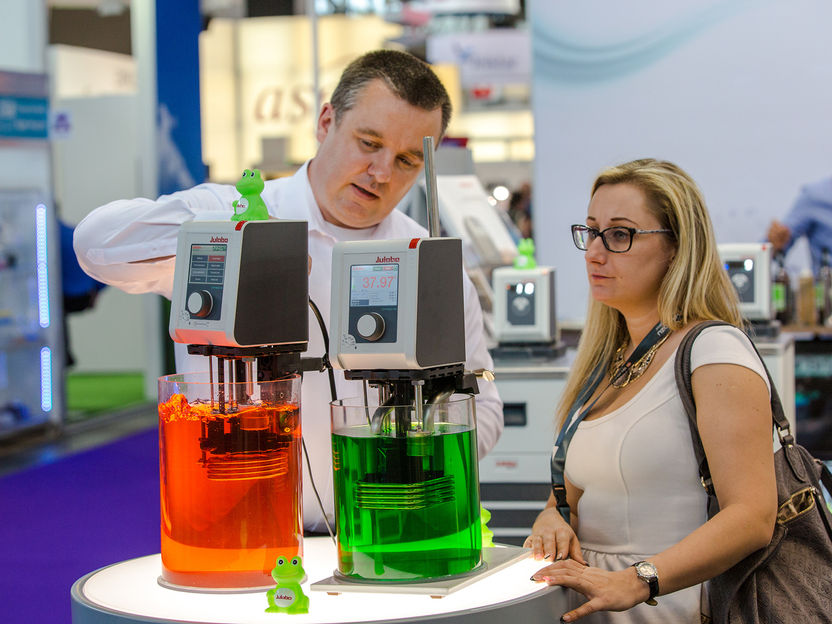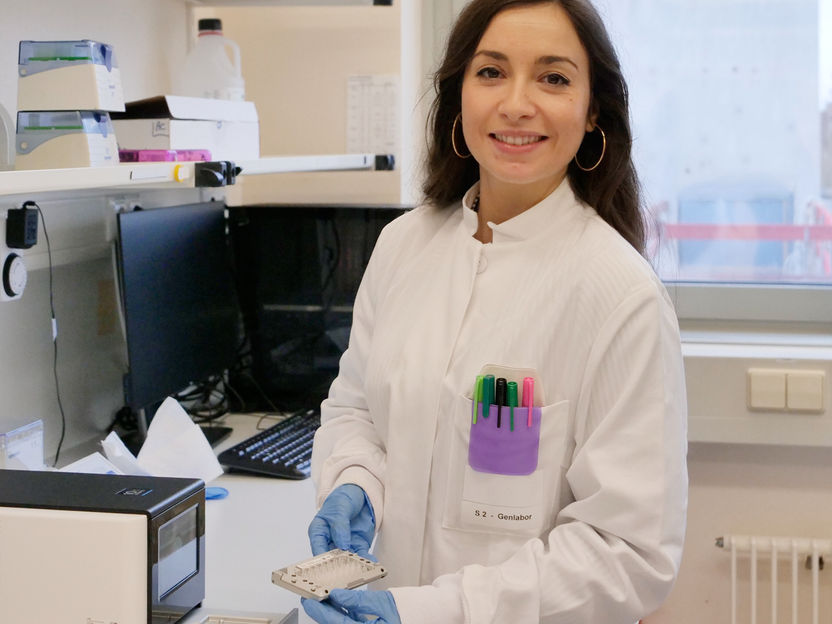Cerebrospinal fluid signals control the behavior of stem cells in the brain
Prof. Fiona Doetsch’s research team at the Biozentrum, University of Basel, has discovered that the choroid plexus, a largely ignored structure in the brain that produces the cerebrospinal fluid, is an important regulator of adult neural stem cells. The study also shows that signals secreted by the choroid plexus dynamically change during aging which affects aged stem cell behavior.

When stem cells from the old brain are cultured with signals of a young choroid plexus they can divide and form new neurons (red).
Biozentrum, Universität Basel
Stem cells are non-specialized cells found in different organs. They have the capacity to generate specialized cells in the body. In the adult brain, neural stem cells give rise to neurons throughout life. The stem cells reside in unique micro-environments, so-called niches which provide key signals that regulate stem cell self-renewal and differentiation.
Stem cells in the adult brain contact the ventricles, cavities filled with cerebrospinal fluid (CSF) that bathes and protects the brain. The CSF is produced by the choroid plexus. The research team led by Prof. Fiona Doetsch at the Biozentrum of the University of Basel has now shown that the choroid plexus is a key component of the stem cell niche, whose properties change throughout life and affect stem cell behavior.
Choroid plexus signals regulate stem cells
Fiona Doetsch’s group uncovered that the choroid plexus secretes a wide variety of important signaling factors in the CSF, which are important for stem cell regulation throughout life. During aging, the levels of stem cell division and formation of new neurons decrease. The research team showed that although stem cells are still present in the aged brain, and have the capacity to divide, they do so less. “One reason is that signals in the old choroid plexus are different. As a consequence stem cells receive different messages and are less capable to form new neurons during aging. In other words, compromising the fitness of stem cells in this brain region”, explains Violeta Silva Vargas, the first author of the study. “But what is really amazing is that when you cultivate old stem cells with signals from young fluid, they can still be stimulated to divide – behaving like the young stem cells”.
A new path to understand brain function in health and disease
In the future, the research team plans to investigate the composition of the signaling factors secreted by the choroid plexus, as well as how these change in different states and affect neural stem cells. This could provide new paths for altering brain function in health and disease. “We can imagine the choroid plexus as a watering can that provides signals to the stem cells. Our investigations also open a new route for understanding how different physiological states of the body influence stem cells in the brain during health and disease, and opens new ways for thinking about therapy”, says Fiona Doetsch.
Original publication
Other news from the department science

Get the life science industry in your inbox
By submitting this form you agree that LUMITOS AG will send you the newsletter(s) selected above by email. Your data will not be passed on to third parties. Your data will be stored and processed in accordance with our data protection regulations. LUMITOS may contact you by email for the purpose of advertising or market and opinion surveys. You can revoke your consent at any time without giving reasons to LUMITOS AG, Ernst-Augustin-Str. 2, 12489 Berlin, Germany or by e-mail at revoke@lumitos.com with effect for the future. In addition, each email contains a link to unsubscribe from the corresponding newsletter.
Most read news
More news from our other portals
Last viewed contents
Anterior_cervical_discectomy_and_fusion
Huntington's_disease
Bacillus_licheniformis
Esomeprazole
Category:German_anatomists
British_Journal_of_Cancer

Trends in Analytics: Digitization, detecting novel pollutants and more - analytica 2018

Hijacking in the immune system - The human cytomegalovirus reprograms cellular defence mechanisms






















































